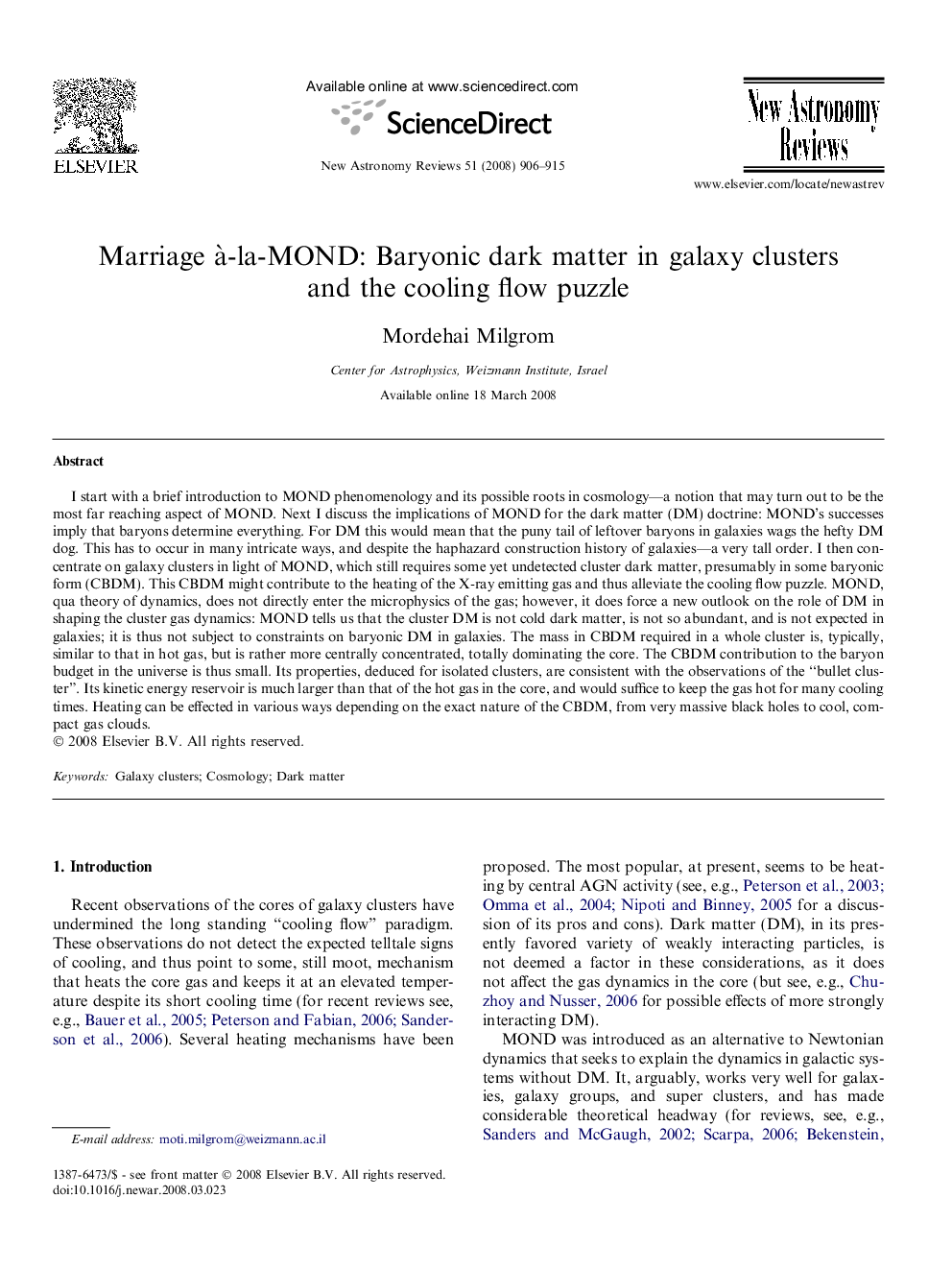| Article ID | Journal | Published Year | Pages | File Type |
|---|---|---|---|---|
| 1780170 | New Astronomy Reviews | 2008 | 10 Pages |
I start with a brief introduction to MOND phenomenology and its possible roots in cosmology—a notion that may turn out to be the most far reaching aspect of MOND. Next I discuss the implications of MOND for the dark matter (DM) doctrine: MOND’s successes imply that baryons determine everything. For DM this would mean that the puny tail of leftover baryons in galaxies wags the hefty DM dog. This has to occur in many intricate ways, and despite the haphazard construction history of galaxies—a very tall order. I then concentrate on galaxy clusters in light of MOND, which still requires some yet undetected cluster dark matter, presumably in some baryonic form (CBDM). This CBDM might contribute to the heating of the X-ray emitting gas and thus alleviate the cooling flow puzzle. MOND, qua theory of dynamics, does not directly enter the microphysics of the gas; however, it does force a new outlook on the role of DM in shaping the cluster gas dynamics: MOND tells us that the cluster DM is not cold dark matter, is not so abundant, and is not expected in galaxies; it is thus not subject to constraints on baryonic DM in galaxies. The mass in CBDM required in a whole cluster is, typically, similar to that in hot gas, but is rather more centrally concentrated, totally dominating the core. The CBDM contribution to the baryon budget in the universe is thus small. Its properties, deduced for isolated clusters, are consistent with the observations of the “bullet cluster”. Its kinetic energy reservoir is much larger than that of the hot gas in the core, and would suffice to keep the gas hot for many cooling times. Heating can be effected in various ways depending on the exact nature of the CBDM, from very massive black holes to cool, compact gas clouds.
